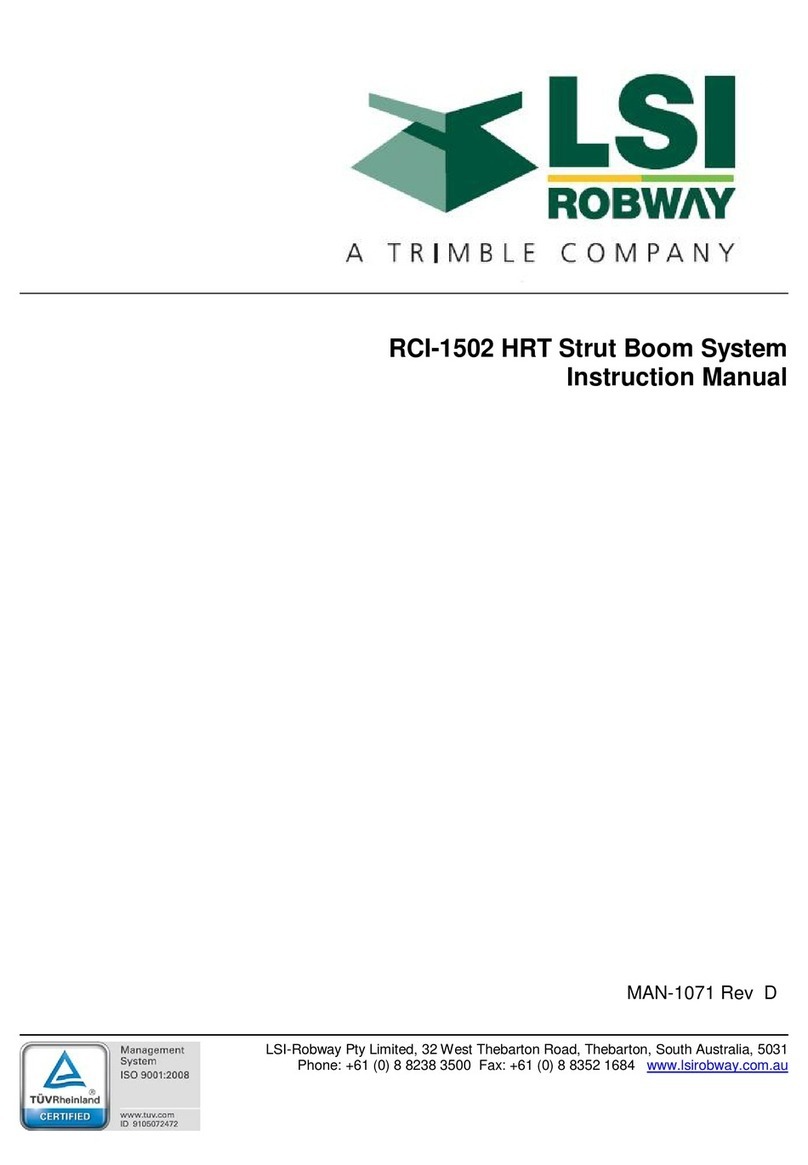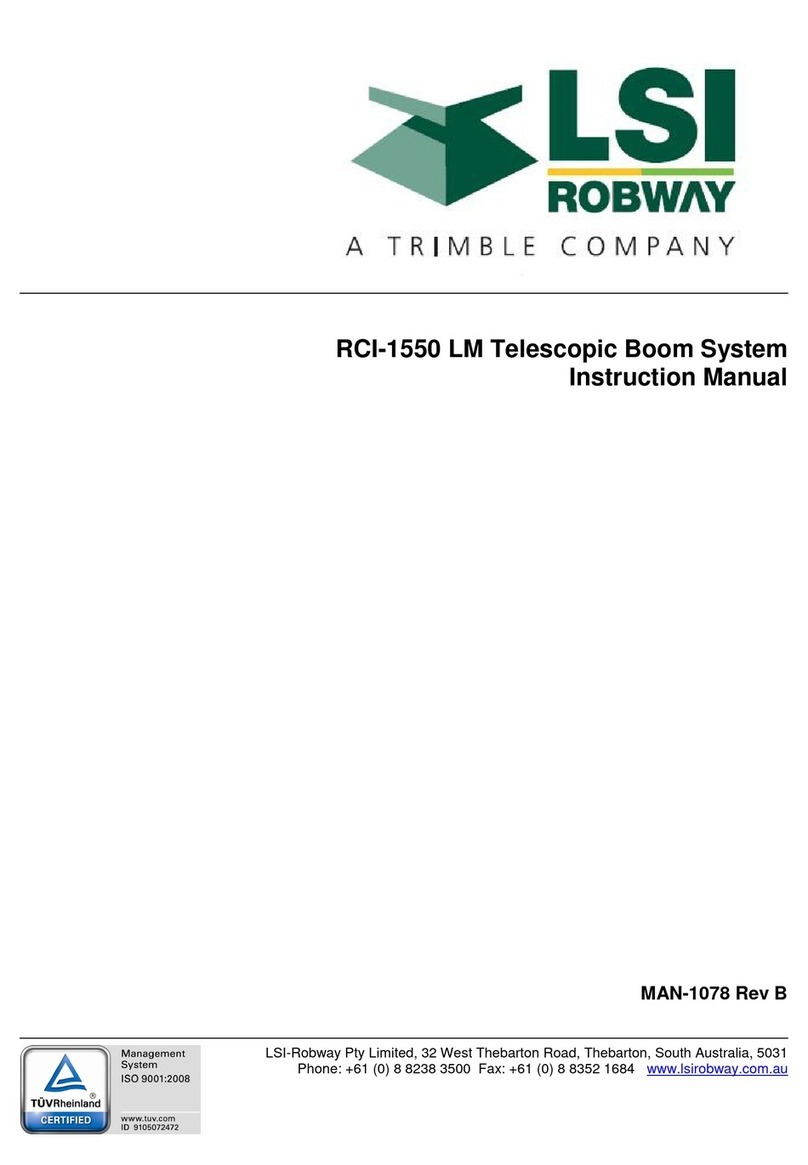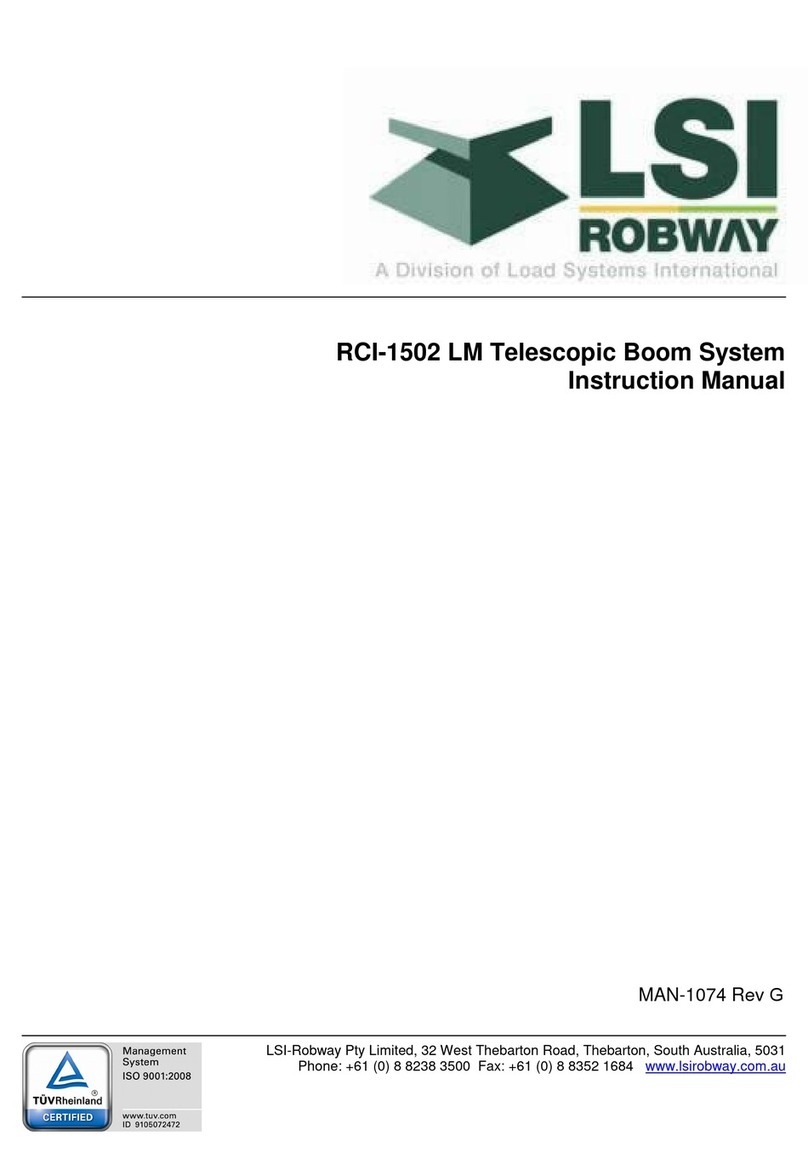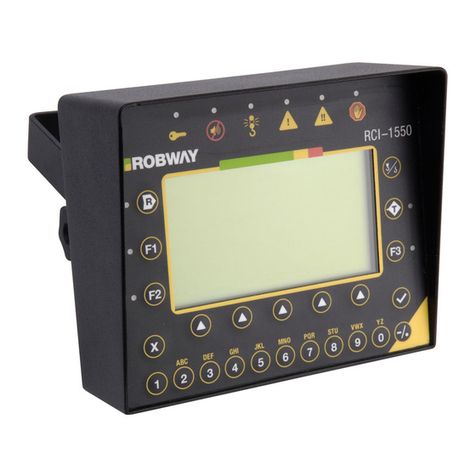
Robway Crane Safety Systems Pty Ltd
Adelaide, South Australia
RCI-1502 LM Strut Boom Manual
FALLS
The numerical display shows the number of falls (parts of line) used for
the winch selected. To change the falls, press the UP/DOWN arrow
keys to ramp to the desired falls number while the FALLS indicator is
on, make sure the correct winch is selected.
DUTY
The numerical display shows the current duty (or configuration) number
selected. Each system manual is supplied with a DUTY LISTING for a
given application. Please refer to Section 8.4. “RCI System
Configuration Sheet / Duty Listing at the rear of the manual for a
description of the duties. A plastic encapsulated version is also supplied
with the system for the crane operator’s quick reference in the cabin.
To change the Duty number, use the UP/DOWN key to ramp to the
desired value, while the DUTY LED indicator is on.
3.4.3. A.T.B. (Anti-Two-Block) and O/RIDE (Override) Indication LEDs
This part of the display has two red LED’s which shows the current
status of the following functions:
O/RIDE - LED ON when over-ride/bypass key is switched on.
A.T.B. - LED ON when on two-blocking condition.
The RCI-1502 is supplied with a standard Anti-Two-Block (ATB) input
for connecting an optional ATB sensor to prevent two-blocking. When
the ATB indicator on the front panel is lit, a two-blocking condition has
occurred and further hoisting is stopped by activating the motion cut
relay, if installed.
3.4.4. Numerical LCD for Current Load Readout
This part has a numerical LCD which shows the current load, in unit
selected (kilopounds or metric tonnes), on the winch selected.
There are three red LED’s on the left side of this window. The MAIN
and AUX LED’s indicate which winch is selected. The LBS LED
indicates the units selected. LED ON means Imperial Units (kips, feet)
and LED OFF means Metric Units (tonnes, metres).
Use the WINCH SELECT button to switch between MAIN and AUX
winches. For Single Winch cranes, only the MAIN winch is active and
the AUX LED is disabled.
Although the RCI-1502 will always check safe operation for both
winches, you should make sure that the correct winch is selected as the
winch selection affects the values shown on the displays.
When the ACTUAL LOAD exceeds the SWL for the current crane
configuration the RCI-1502 will activate audible and visual alarms.

































